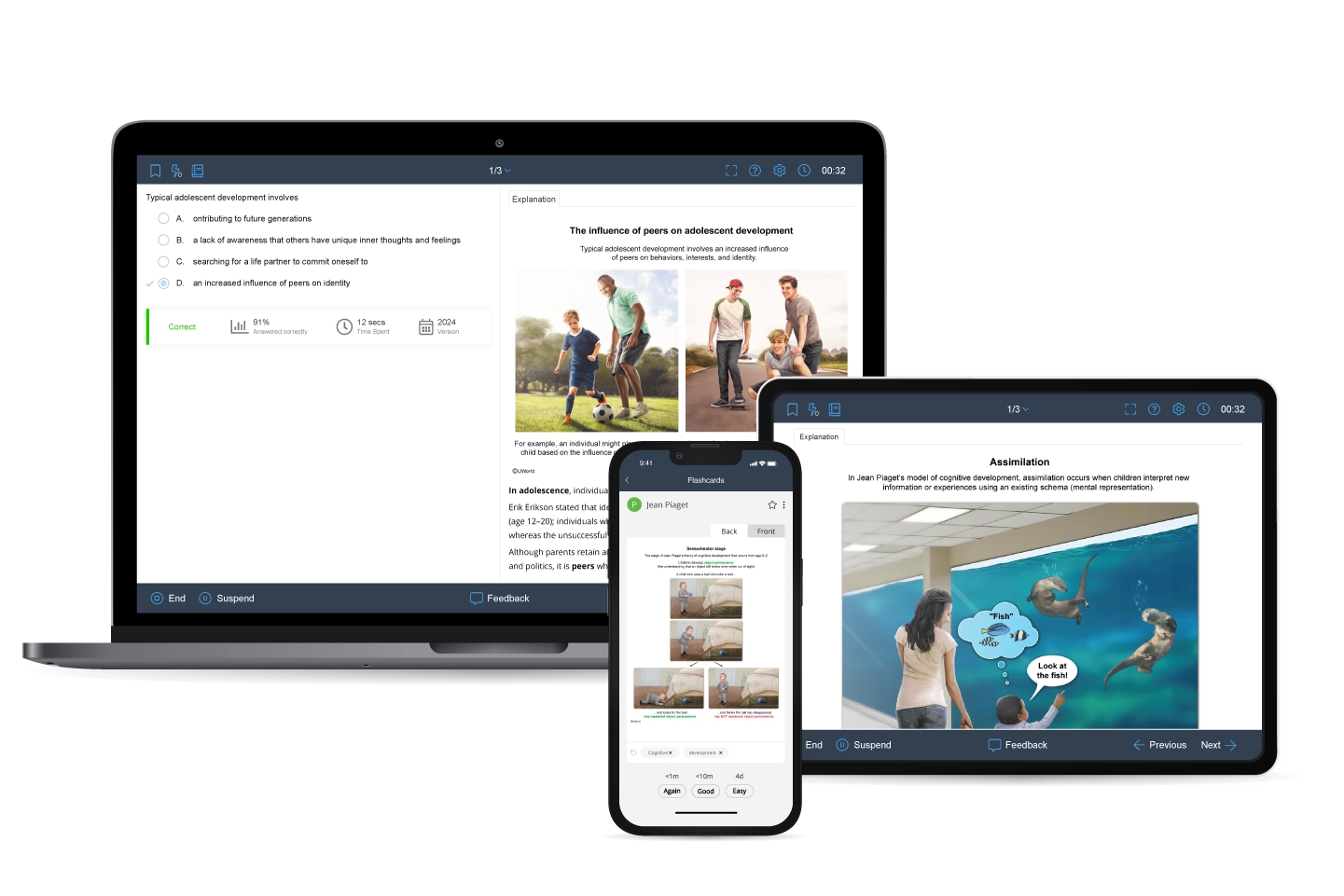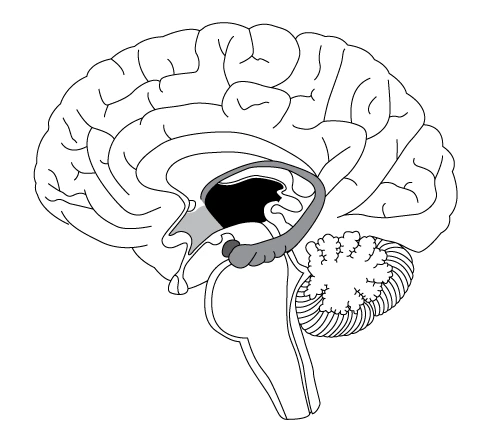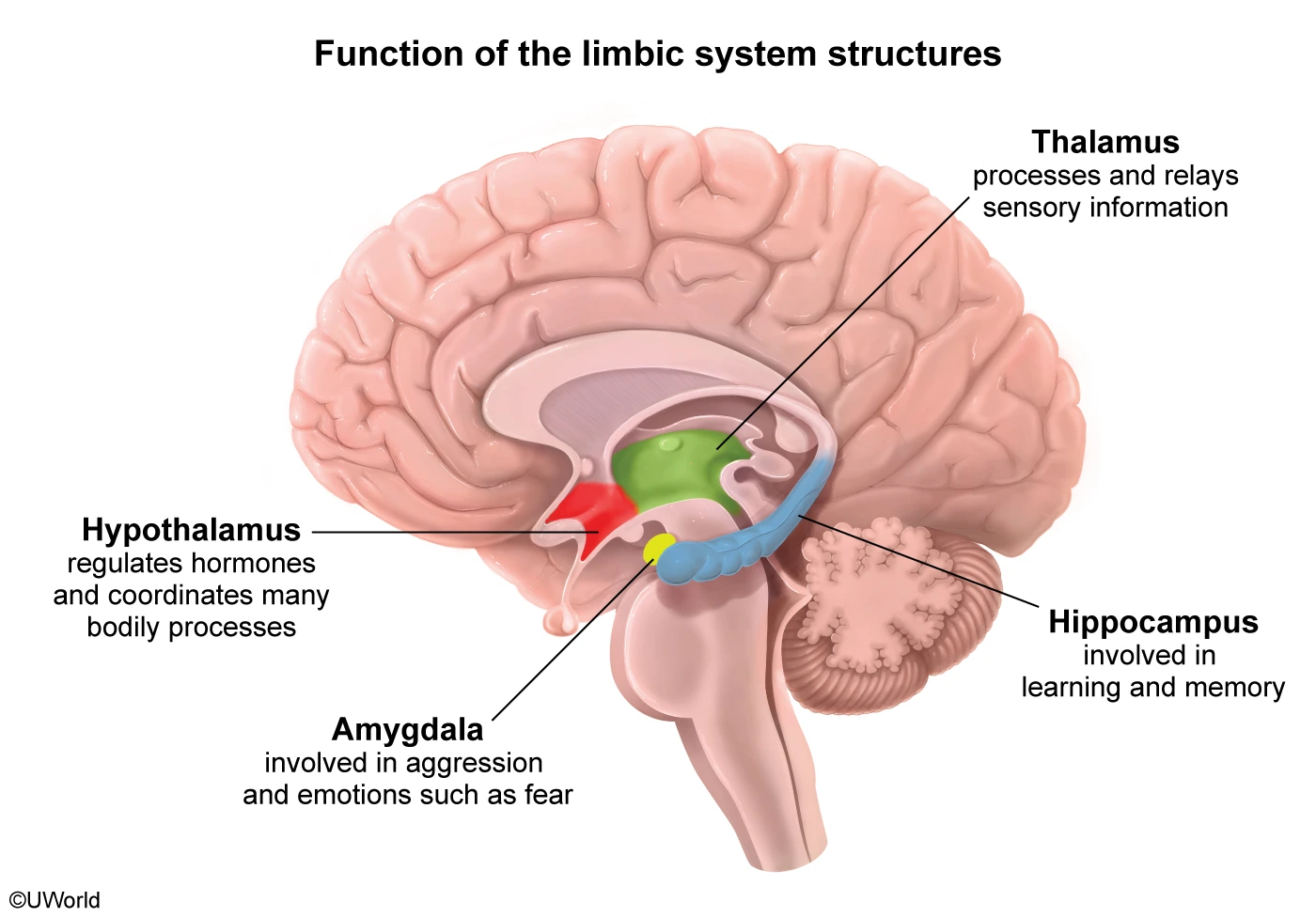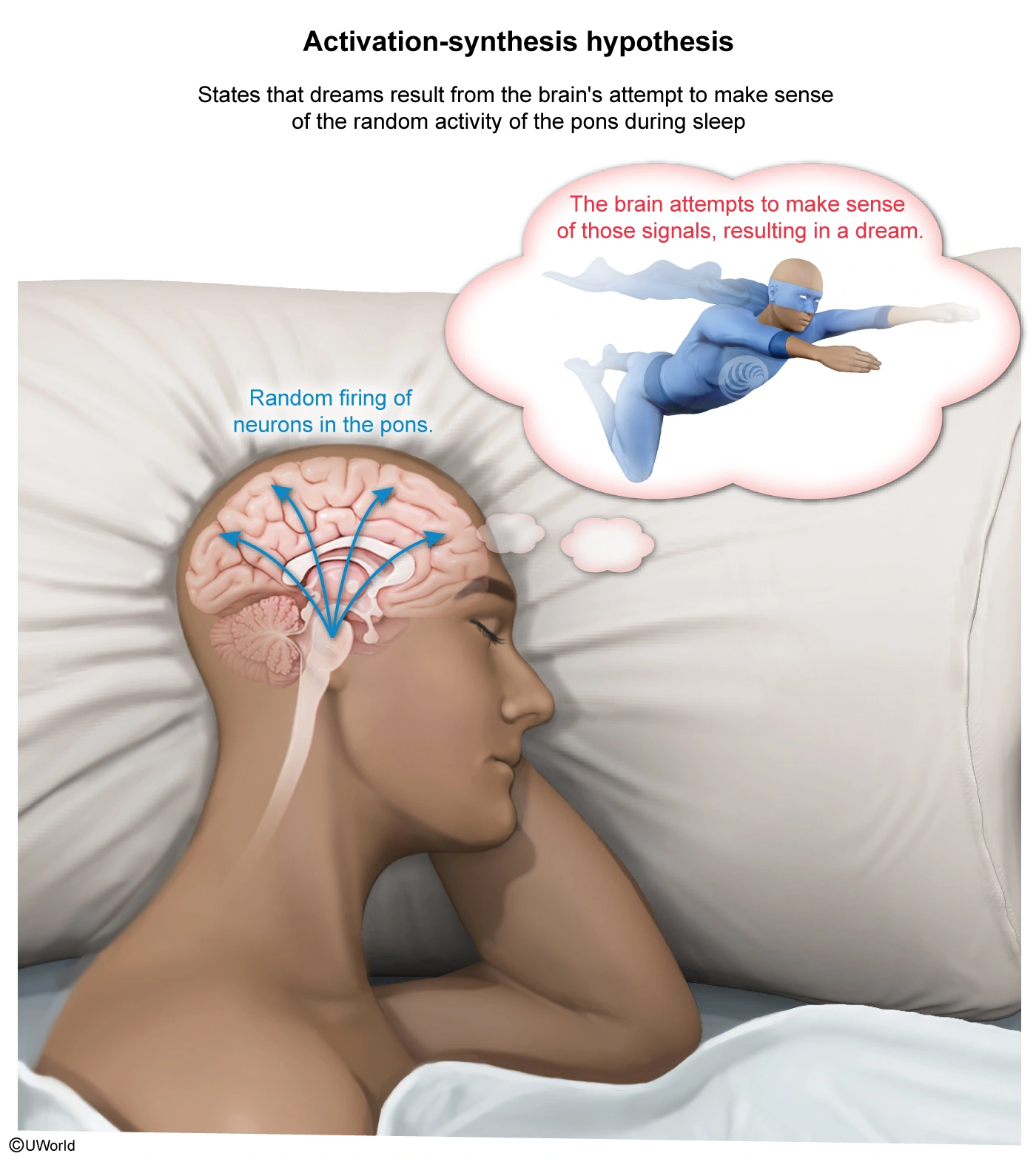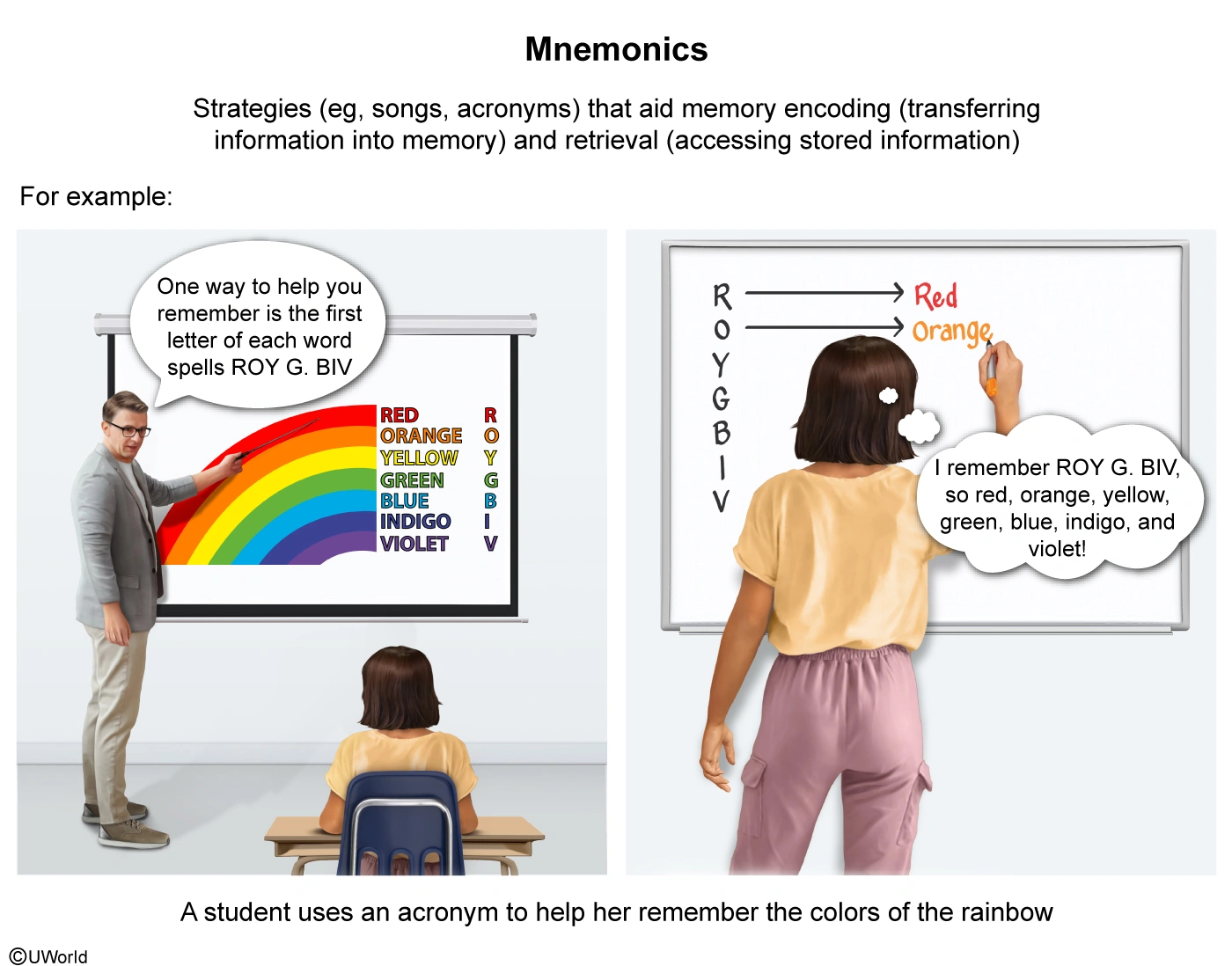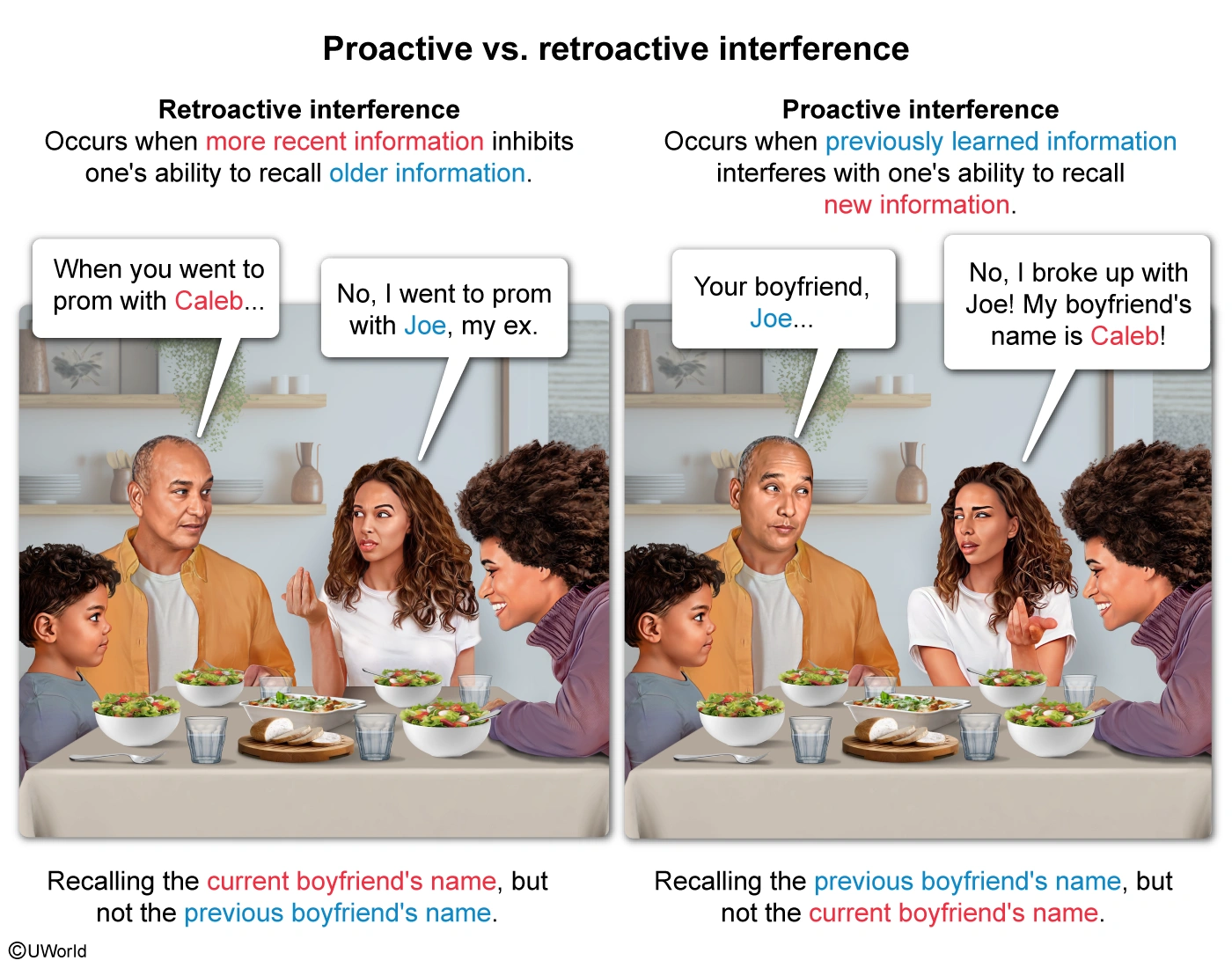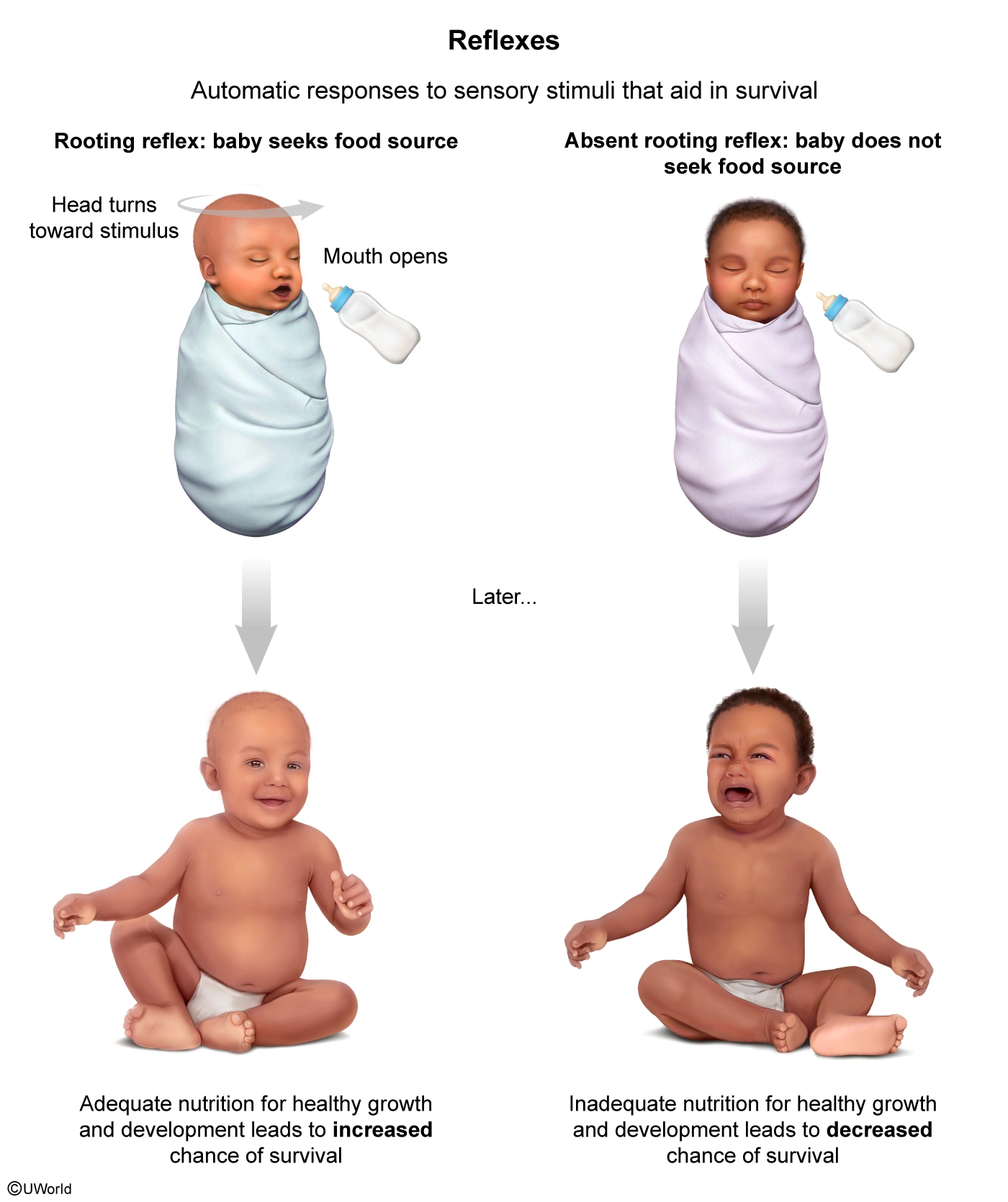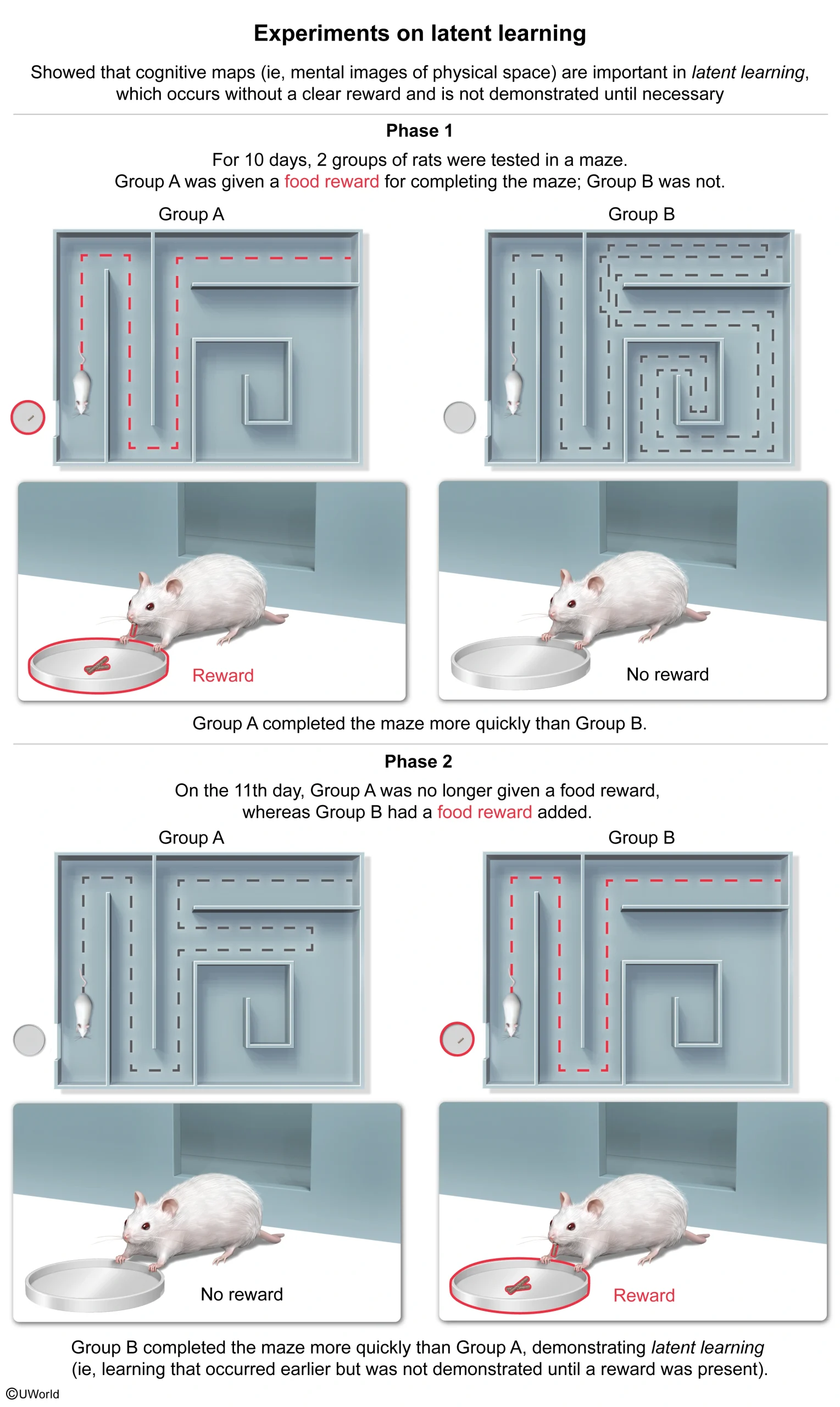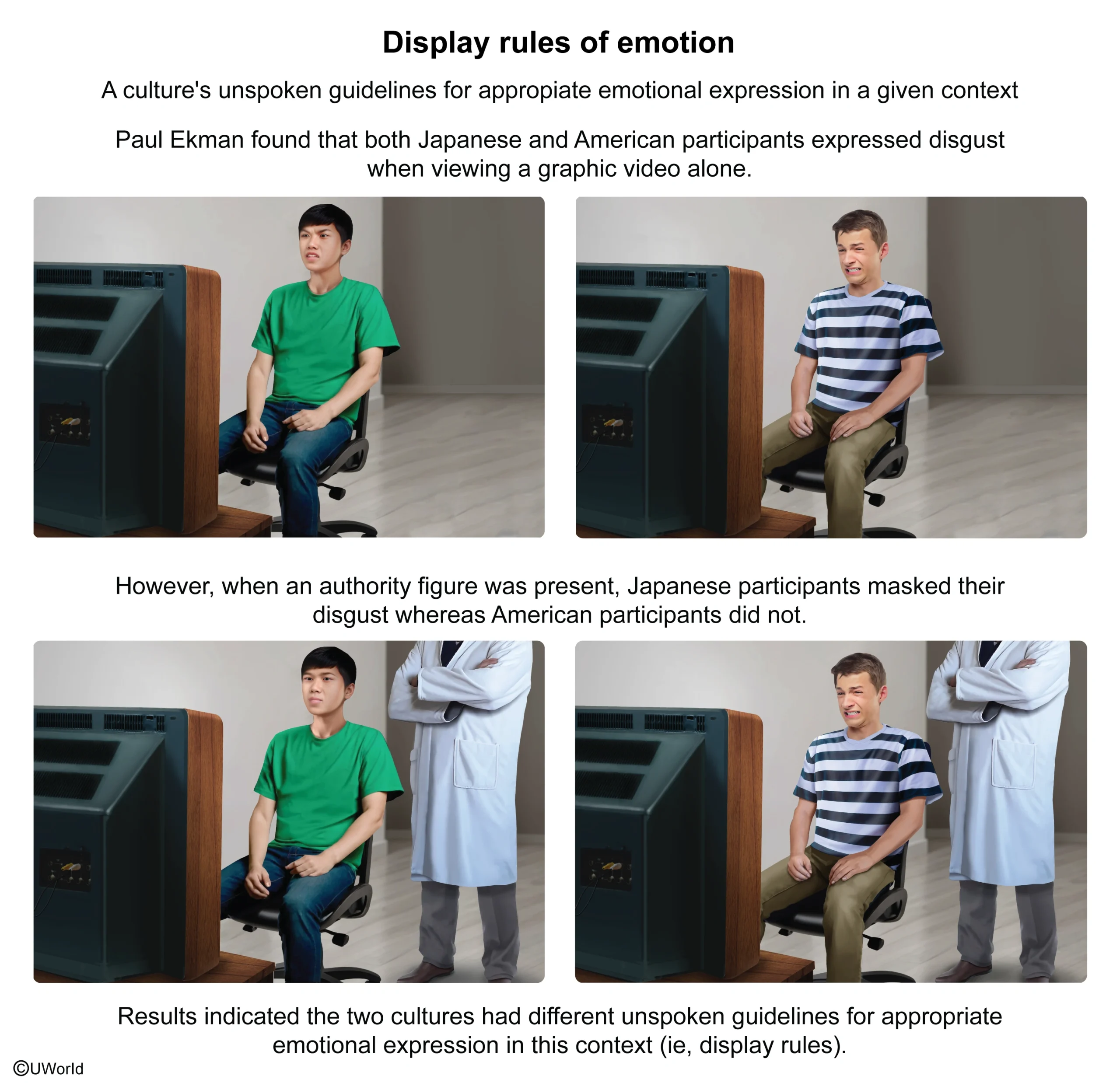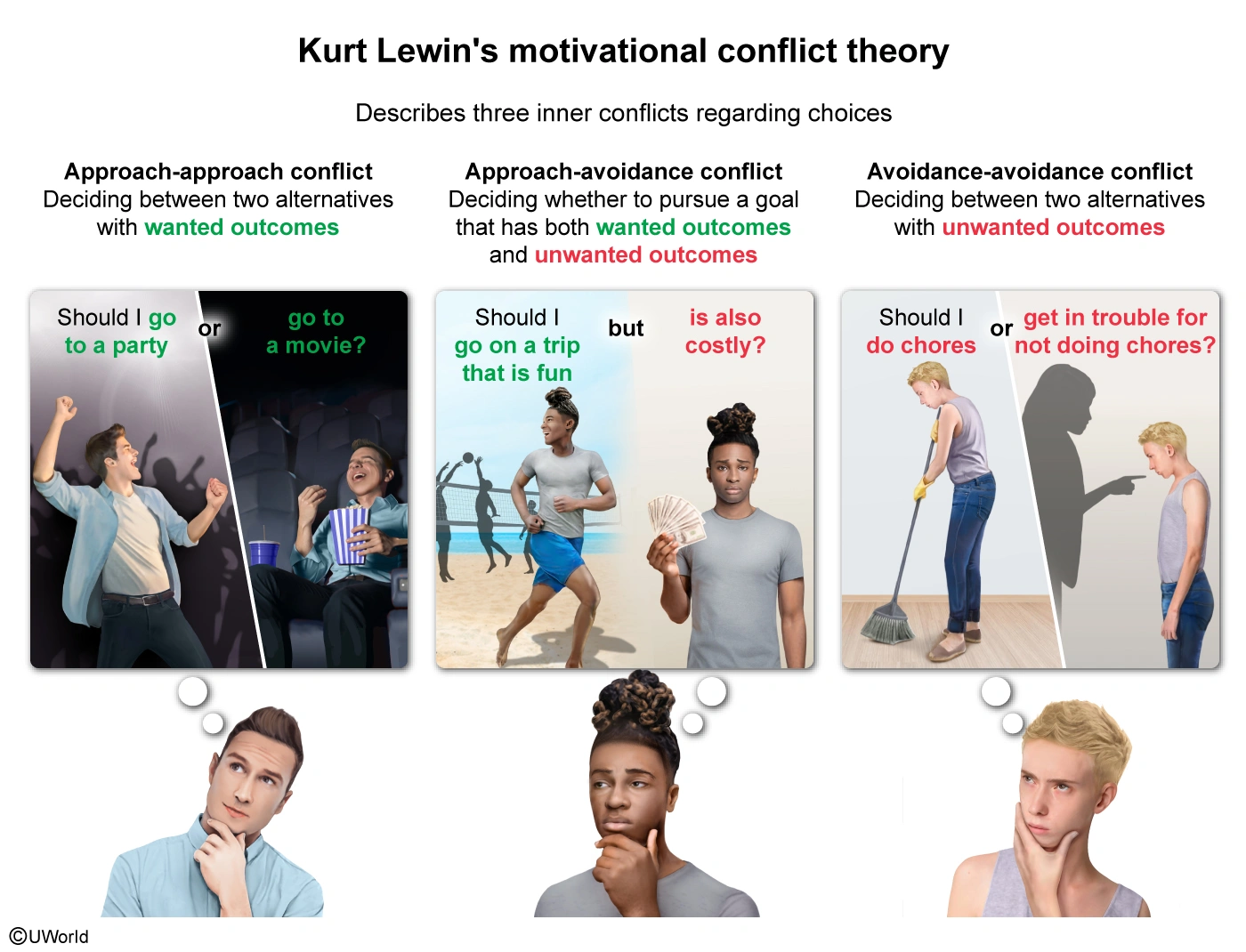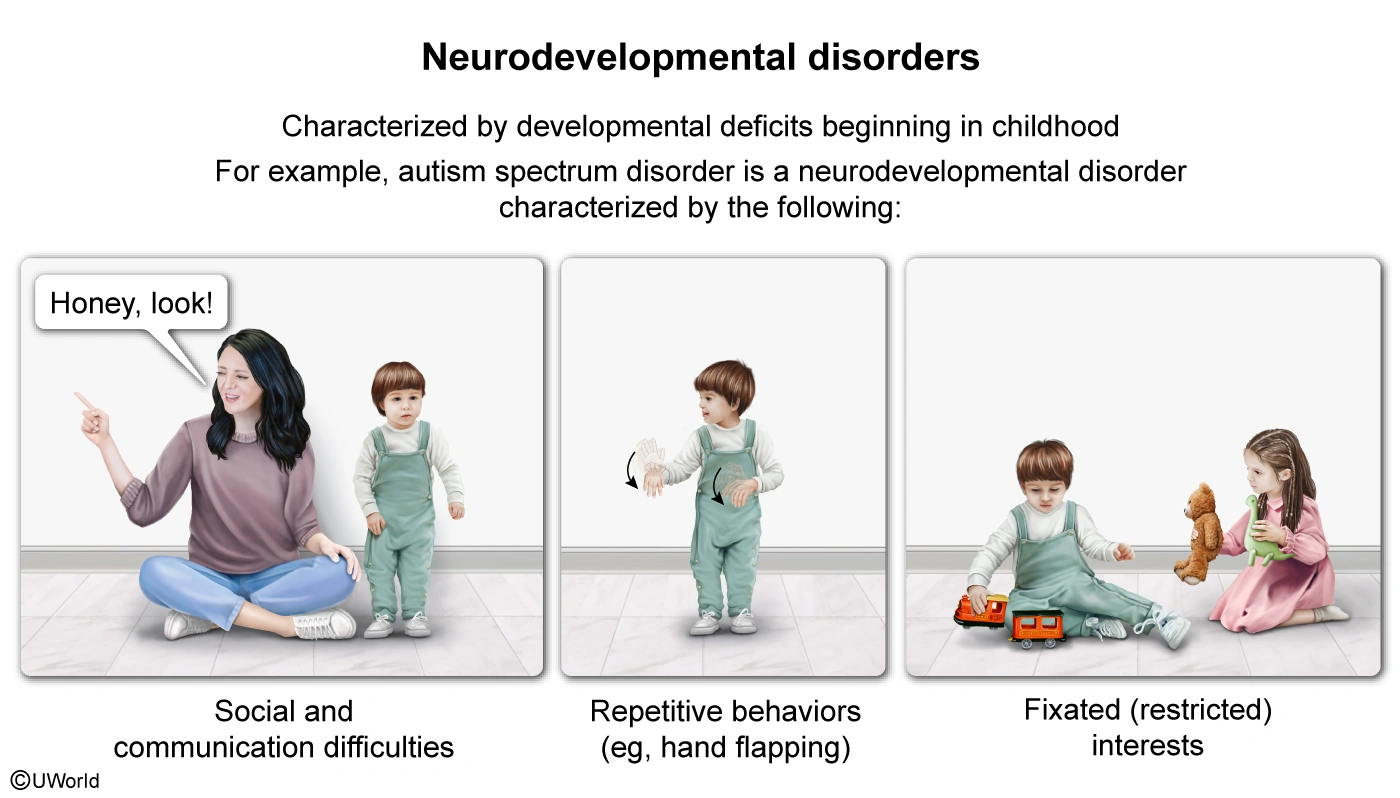AP® Psychology Practice Tests & Questions (QBank)
Build confidence for the AP® Psychology Test with practice exams, multiple-choice questions, and review resources that mirror the real thing. Study smarter, stress less, and aim for your best score — all on your schedule and budget.
Access Includes
- 350+ AP Psych Practice Questions
- Customizable Quiz Generator
- Realistic Timed AP Psych Test Simulation
- Colorful Visual Explanations
- Step-by-Step Solutions
- Adjustable Smart Study Planner
- Progress Dashboard
- Smart Flashcards
Try These AP Psychology Practice Questions
Biological Bases of Behavior Practice Test
Question
Which of the following systems is represented in the drawing above?
| A. The peripheral nervous system | |
| B. The somatic nervous system | |
| C. The limbic system | |
| D. The reticular activating system |
Explanation
Located beneath the outermost region of the cortex are several brain structures that contribute to emotion, memory, and motivation. These structures are sometimes collectively referred to as the limbic system.
Limbic structures include the amygdala (important for fear and aggression), hypothalamus (releases hormones and coordinates many bodily processes such as hunger), thalamus (involved in sensation), and hippocampus (important for learning and memory).
Therefore, the system that is represented in the drawing above is the limbic system.
(Choice A) The peripheral nervous system contains the neurons and glial cells outside the brain and spinal cord.
(Choice B) The somatic nervous system is the division of the peripheral nervous system that includes the sensory neurons that relay information from the body to the central nervous system (CNS) and the motor neurons that relay commands from the CNS to the body.
(Choice D) The reticular activating system is part of the reticular formation, a series of neurons that span the entire brainstem and contribute to consciousness and wakefulness.
Things to remember:
Limbic system structures include the amygdala (important for fear and aggression), hypothalamus (releases hormones and coordinates many bodily processes such as hunger), thalamus (involved in sensation), and hippocampus (important for learning and memory).
Question
Which of the following argues that dreams result from the brain interpreting random activity of the pons?
| A. Activation-synthesis hypothesis | |
| B. Restoration theory | |
| C. Consolidation theory | |
| D. Drive-reduction theory |
Explanation
Consciousness is the awareness of one's self and one's environment. Dreaming is an altered state of consciousness beyond normal wakefulness.
Several theories seek to explain why people dream. The activation-synthesis hypothesis states that dreams result from the brain's attempt to make sense of the random activity of the pons during sleep. The pons is the area in the brainstem responsible for sleeping, waking, and dreaming.
Therefore, the theory that argues that dreams result from the brain interpreting random activity of the pons is the activation-synthesis hypothesis.
(Choice B) Restoration theory argues that sleep promotes growth (eg, production of new proteins) and enables the body to repair damage.
(Choice C) Consolidation theory argues that dreams reflect the process of memory consolidation because, for example, elements of daily experience can be incorporated into dreams.
(Choice D) Drive-reduction theory argues that motivation results from a disruption of homeostasis (eg, decreasing blood glucose levels), which generates a biological need; the biological need generates a drive (eg, hunger) to fulfill that need, which prompts action (eg, food-seeking behaviors) to restore homeostasis.
Things to remember:
The activation-synthesis hypothesis states that dreams result from the brain's attempt to make sense of the random activity of the pons (the brain area responsible for sleeping, waking, and dreaming) during sleep.
Question
The function of somatosensory receptors is to
| A. transmit sound vibrations to the inner ear | |
| B. relay information from photoreceptors to ganglion cells | |
| C. convert touch information into neural signals | |
| D. bind odor molecules and transmit information to the olfactory bulb |
Explanation

In the process of touch, somatosensory receptors in the skin are activated by a stimulus (eg, an insect landing on one's arm). The somatosensory receptors transduce (convert) this somatosensory information (eg, touch, pain, temperature) into neural signals. Sensory neurons relay the information to the brain for processing in the somatosensory cortex of the parietal lobe.
Therefore, the function of somatosensory receptors is to convert touch information into neural signals.
(Choice A) The ossicles are the three small bones (hammer, anvil, and stirrup) located in the middle ear that transmit sound vibrations to the inner ear.
(Choice B) Bipolar cells are cells in the retina that relay visual information from photoreceptors (ie, visual receptor cells) to ganglion cells.
(Choice D) Olfactory receptor neurons are the receptor cells for the sense of smell; they bind odor molecules in the nasal cavity and transmit olfactory information to the olfactory bulb.
Things to remember:
In the process of touch, somatosensory receptors in the skin are activated by a stimulus (eg, an insect landing on one's arm). The somatosensory receptors convert this somatosensory information (eg, touch, pain, temperature) into neural signals.
Cognition Practice Test
Question
Xue wants to memorize the colors of the rainbow. She uses the acronym ROY G. BIV to help her remember that the colors are red, orange, yellow, green, blue, indigo, and violet. This illustrates
| A. maintenance rehearsal | |
| B. the spacing effect | |
| C. implicit memory | |
| D. a mnemonic |
Explanation
Memory involves encoding, the transfer of information into memory, storage (retaining the information), and retrieval (accessing the information).
Mnemonics are strategies (eg, songs, acronyms) that aid memory encoding and retrieval. For example, reciting the ABCs in tune with a song helps people learn the alphabet.
Therefore, Xue using an acronym to help her remember the colors of the rainbow illustrates a mnemonic.
(Choice A) Maintenance rehearsal, mentally repeating something over and over, can prolong the duration of short-term memory.
(Choice B) The spacing effect refers to how repeated rehearsal of information over time (ie, distributed practice) leads to better recall than all at once (ie, massed practice).
(Choice C) Implicit memory (also called nondeclarative memory) is memory for things that cannot be consciously recalled, such as skills, tasks, emotions, and reflexes.
Things to remember:
Memory involves encoding (transferring information into memory), storage (retaining the information), and retrieval (accessing the information). Mnemonics are strategies (eg, songs, acronyms) that aid memory encoding and retrieval.
Question
Malik has a difficult time remembering passwords, so he decides to change his email password to the date he was married. Now he can easily recall his password. Malik's memory strategy is an example of the
| A. self-reference effect | |
| B. availability heuristic | |
| C. representativeness heuristic | |
| D. serial position effect |
Explanation
The self-reference effect states that information that is personally relevant (ie, linked to oneself) is easier to remember because personally relevant information is meaningful and so is processed at a deeper level.
For example, Malik, who has difficulty remembering passwords, more easily remembers his email password after changing it to the date of his wedding because this makes the information personally relevant, which leads to easier retrieval.
Therefore, Malik's memory strategy (ie, choosing a password that is personally relevant) is an example of the self-reference effect.
(Choice B) The availability heuristic is the tendency to believe that if something is easily recalled from memory, it must be common or likely (eg, easily recalling news of a plane crash and incorrectly assuming that plane crashes are common).
(Choice C) The representativeness heuristic is the tendency to compare things (eg, people) to mental prototypes when making judgments (eg, a mental prototype of a nurse as female leads to the inaccurate assumption that a male nurse is a doctor).
(Choice D) The serial position effect explains how the relative ease (or difficulty) of remembering an item from a list is related to the item's position on the list; items at the beginning or end of a list are easier to recall.
Things to remember:
The self-reference effect states that information that is personally relevant (ie, linked to oneself) is easier to remember because personally relevant information is meaningful and so is processed at a deeper level.
Question
Tamera just moved to a new house and memorized her new address. Now, she can recite her new address but struggles to recall her old address. Tamera's difficulty is most likely due to a memory error known as
| A. anterograde amnesia | |
| B. proactive interference | |
| C. retrograde amnesia | |
| D. retroactive interference |
Explanation
Many factors impact how easily memories are retrieved. Encoding is the first step in memory and is necessary for memory storage and retrieval; in other words, information must be encoded to be remembered.
A common memory error that occurs when previously learned information interferes with the ability to recall new information is called proactive interference (Choice B). For example, an individual cannot remember their new phone number (ie, recent information) and repeatedly confuses it with their old phone number (ie, older information).
Conversely, retroactive interference occurs when recently encoded information prevents the recall of older information. For example, an individual cannot remember their old phone number (ie, older information) and repeatedly confuses it with their new phone number (ie, recent information).
Therefore, Tamera's difficulty (struggling to recall her old address once she memorized her new address) is most likely due to a memory error known as retroactive interference.
(Choice A) Anterograde amnesia is a medical disorder in which a person cannot form new memories following a physiological trauma (eg, head injury, stroke). For example, while the patient is paying attention, information such as a new name can be temporarily learned but not permanently stored and recalled later.
(Choice C) Retrograde amnesia is a medical disorder in which a person cannot access old memories acquired prior to a physiological trauma (eg, head injury, stroke). For example, the patient cannot remember what they were doing before the trauma.
Things to remember:
Retroactive interference occurs when recently encoded information prevents the recall of older information. For example, an individual's new address interferes with her ability to recall her old address.
Development and Learning Practice Test
Question
Which of the following assertions is best supported by the rooting reflex?
| A. Humans are born with automatic responses that aid in survival. | |
| B. Contact comfort is an important element of attachment. | |
| C. Humans are born with specific emotional dispositions. | |
| D. Certain learned behaviors develop only during critical periods. |
Explanation
Motor skills, which are voluntary movements of the body, develop over time. In contrast, humans are born with reflexes, automatic responses to sensory stimuli that aid in survival.
For example, the rooting reflex, which causes an infant to turn their head and open their mouth when stroked on the cheek, encourages feeding.
Therefore, the assertion that is best supported by the rooting reflex is humans are born with automatic responses that aid in survival.
(Choice B) In his studies on attachment, Harry Harlow found that newborn monkeys preferred soft, cloth-covered "mothers" (that offered contact comfort) over wire, food-source "mothers." The rooting reflex supports the assertion that humans are born with automatic responses that aid in survival, not the idea that contact comfort is an important element of attachment.
(Choice C) Humans are born with specific emotional dispositions known as temperaments. The rooting reflex supports the assertion that humans are born with automatic responses that aid in survival, not the idea that humans are born with specific emotional dispositions.
(Choice D) Certain learned behaviors (eg, language acquisition) must develop during critical periods (eg, childhood). The rooting reflex supports the assertion that humans are born with automatic responses that aid in survival, not the idea that certain behaviors develop during critical periods.
Things to remember:
Humans are born with reflexes, automatic responses to sensory stimuli that aid in survival. The rooting reflex, which causes an infant to turn their head and open their mouth when stroked on the cheek, encourages feeding.
Question
In high school, Mikel watched a documentary about forests without paying too much attention to the film. Years later, he becomes lost in the woods while hiking with friends. However, Mikel remembers from the documentary that moss grows on the north side of trees and uses this knowledge to navigate his way out of the forest. Mikel's behavior reveals
| A. classical conditioning | |
| B. habituation | |
| C. self-fulfilling prophecy | |
| D. latent learning |
Explanation
Latent learning occurs without a clear reward and is not demonstrated until necessary.
For example, latent learning is revealed if someone passively learns information about moss from a forest documentary (ie, learning without a reward) and uses that information years later when lost in the woods (ie, demonstrating the learning when necessary).
Therefore, Mikel's behavior of learning about moss without a reward and later demonstrating that knowledge in the woods when necessary reveals latent learning.
(Choice A) Classical conditioning occurs when a stimulus that did not previously elicit a certain response (neutral stimulus) is paired with and subsequently takes on the properties of a physiologically arousing stimulus (unconditioned stimulus).
(Choice B) Habituation is characterized by a decreased behavioral response after repeated exposure to a stimulus (eg, no longer being awakened by the sound of traffic over time).
(Choice C) A self-fulfilling prophecy occurs when one's expectation or fear about a potential event unwittingly or unintentionally causes the event to happen (eg, fearing she will trip, a hiker becomes tense and therefore trips).
Things to remember:
Latent learning occurs without a clear reward and is not demonstrated until necessary.
Question
The concept of latent learning is best exemplified by which of the following situations?
| A. A student suddenly realizes the answer to a test question after leaving the classroom. | |
| B. A child plays with a toy train after watching an older sibling do so. | |
| C. A rat passively learns a maze when there is no food reward and later demonstrates learning by quickly completing the maze for food. | |
| D. Parents stop nagging their son once he cleans his room, which increases the likelihood he will clean his room in the future. |
Explanation
Latent learning occurs without a clear reward and is not demonstrated until necessary.
For example, rats passively learn information while exploring a maze, even during nonreinforced trials (eg, no food reward). Later, they demonstrate their learning by quickly completing the maze when there is reinforcement.
Therefore, the concept of latent learning is best exemplified by a rat passively learns a maze when there is no food reward and later demonstrates learning by quickly completing the maze for food.
(Choice A) Insight learning occurs when an individual suddenly realizes the solution to a problem all at once, often after thinking about the problem for a while and making little progress toward it (eg, realizing the answer to a test question after leaving the classroom).
(Choice B) Social learning, also called observational learning, occurs when an observer imitates (copies) a behavior that someone else has modeled (eg, a child playing with a toy after watching an older sibling do so).
(Choice D) Negative reinforcement occurs in operant conditioning when an undesirable stimulus (eg, nagging) is removed, increasing the likelihood that a behavior (eg, cleaning one's room) will reoccur.
Things to remember:
Latent learning occurs without a clear reward (eg, rats explore a maze without reinforcement) and is not demonstrated until necessary (eg, rats demonstrate knowledge of a maze in the presence of reinforcement).
Social Psychology and Personality Practice Test
Question
Research findings on the display rules of emotion suggest that
| A. cognitive interpretations of physiological responses determine the experienced emotion | |
| B. cultures may differ in the unspoken standards for emotional expression | |
| C. specific emotions occur because of physiological responses to stimuli | |
| D. feelings of happiness may occur as a result of smiling |
Explanation
Paul Ekman conducted research on the display of emotion. He found that individuals from different cultures display their emotions differently.
For example, when Japanese and American participants were shown a graphic video, participants from both cultures expressed disgust when they viewed the video while alone. However, when an authority figure was present, Japanese participants masked their disgust in front of this figure whereas American participants did not.
Ekman termed these differences as display rules: a culture's unspoken guidelines for appropriate emotional expression in a given context. Within a culture, display rules may also differ according to an individual's age, gender, and socioeconomic class.
Therefore, research findings on the display rules of emotion suggest that cultures may differ in the unspoken standards for emotional expression.
(Choice A) The Schacter two-factor theory of emotion suggests that cognitive interpretations of physiological responses (eg, "My heart is racing because I am afraid") determine the experienced emotion (eg, fear).
(Choice C) The James-Lange theory of emotion suggests that specific emotions (eg, fear) occur because of physiological responses to stimuli (eg, racing heart).
(Choice D) The facial feedback hypothesis (also called the facial feedback effect) suggests that the experience of emotion results from facial expressions (eg, the feeling of happiness results from smiling).
Things to remember:
Paul Ekman found that individuals from different cultures express emotional differently. He theorized that display rules are a culture's unspoken guidelines for appropriate emotional expression in a given context.
Question
Karim does not feel like studying for an upcoming test even though his parents told him to. He is deciding whether to study or to get in trouble for not studying. This decision is an example of
| A. an approach-approach conflict | |
| B. an approach-avoidance conflict | |
| C. an avoidance-avoidance conflict | |
| D. The overjustification effect |
Explanation
Stress can result from the complex choices a person faces. Kurt Lewin's motivational conflict theory describes three inner conflicts regarding choices:
- Approach-approach conflict occurs when one decides between pursuing two incompatible goals that both have desirable outcomes (eg, going to a party or a movie) (Choice A).
- Approach-avoidance conflict occurs when one decides whether to pursue a goal that has both wanted and unwanted outcomes (eg, going on a trip is fun but costs a lot of money) (Choice B).
- Avoidance-avoidance conflict occurs when one decides between two choices that both have unwanted outcomes (eg, studying or getting in trouble for not studying).
In this scenario, Karim is deciding between two alternatives he views as undesirable: studying or getting in trouble for not studying. Therefore, this decision is an example of an avoidance-avoidance conflict.
(Choice D) The overjustification effect occurs when someone who already enjoys an activity is rewarded for it, which paradoxically decreases that person's enjoyment of the activity.
Things to remember:
Kurt Lewin's motivational conflict theory describes three inner conflicts regarding choices: approach-approach, approach-avoidance, and avoidance-avoidance. For example, an avoidance-avoidance conflict occurs when one decides between two choices that both have unwanted outcomes (eg, studying or getting in trouble for not studying).
Question
Which of the following pairs of concepts is most closely associated with the humanistic theory of personality?
| A. Traits and the constant nature of personality | |
| B. Positive reinforcement and shaping | |
| C. Unconditional positive regard and self-concept | |
| D. Defense mechanisms and the collective unconscious |
Explanation
Humanistic psychology focuses on the higher aspects of human nature, including the drive toward self-actualization (ie, achieving one's full potential) and personal growth.
Humanistic psychologist Carl Rogers described how unconditional positive regard, acceptance/support regardless of behavior, facilitates personal growth and progress toward self-actualization. Alternatively, receiving conditional positive regard, acceptance/support based on what a person does (eg, getting good grades), inhibits one's personal growth and progress toward self-actualization.
Rogers also suggested that self-concept, a person's ideas and feelings about who they are, is a primary part of personality. People whose ideal self (the idea of who they should be) matches their actual experiences will have a more positive self-concept. Positive self-concepts are linked to better functioning and health.
Therefore, the pair of concepts most closely associated with the humanistic theory of personality is unconditional positive regard and self-concept.
(Choice A) Traits (enduring personality characteristics) and the constant nature of personality (the idea that personality remains stable over time) are associated with the trait, not humanistic, approach.
(Choice B) Positive reinforcement (the addition of a desirable stimulus that increases a behavior) and shaping (the rewarding of behaviors that progressively resemble the desired behavior) are associated with the behavioral, not humanistic, approach.
(Choice D) Defense mechanisms (largely unconscious means by which reality is altered to relieve anxiety) and the collective unconscious (inherited elements of human experience) are associated with the psychoanalytic, not humanistic, approach.
Things to remember:
Humanistic psychology focuses on the higher aspects of human nature and emphasizes self-actualization (realizing full potential), unconditional positive regard (acceptance/support regardless of behavior), and self-concept (a person's ideas and feelings about who they are).
Mental and Physical Health Practice Test
Question
From a very young age, David has struggled with communication and social interaction. When under stress, he engages in repetitive behaviors, such as hand flapping. He shows an intense interest in trains but lacks other hobbies. Which of the following psychological disorders is David most likely exhibiting?
| A. Schizophrenia | |
| B. Autism spectrum | |
| C. Social anxiety | |
| D. Antisocial personality |
Explanation
Neurodevelopmental disorders are characterized by developmental deficits beginning in childhood.
One neurodevelopmental disorder, autism spectrum disorder, is characterized by social and communication difficulties, repetitive behaviors (eg, hand flapping), and fixated (ie, restricted, intense) interests.
Autism spectrum disorder may vary in severity. Higher-functioning people with autism have normal (or even higher) levels of intelligence but struggle socially, whereas those with more severe forms of autism may be unable to use language.
Therefore, David, who struggles with communication and social interaction, engages in repetitive behaviors (eg, hand flapping), and shows a fixated interest (eg, trains) is most likely exhibiting autism spectrum disorder.
(Choice A) Schizophrenia is a psychotic disorder which typically involves both positive symptoms (eg, hallucinations, delusions) and negative symptoms (eg, flat affect).
(Choice C) Social anxiety disorder is characterized by an intense fear of interpersonal rejection or humiliation.
(Choice D) Antisocial personality disorder is characterized by a pattern of violation and exploitation of others, impulsivity, and breaking the law, along with a lack of remorse and empathy.
Things to remember:
Neurodevelopmental disorders are characterized by developmental deficits beginning in childhood. Autism spectrum disorder involves social and communication difficulties, repetitive behaviors, and fixated interests.
Question
Neha is taking final exams. During her first exam, Neha was sweating, her heart rate was elevated, and she felt very stressed. Now, on her third day of exams, Neha's body has adjusted to the ongoing stress. Hans Selye would probably say that Neha is demonstrating
| A. an approach-avoidance conflict | |
| B. the resistance stage of the general adaptation syndrome | |
| C. the exhaustion stage of the general adaptation syndrome | |
| D. systematic desensitization |
Explanation
The general adaptation syndrome, proposed by Hans Selye, is a model describing how the body reacts to stress. According to this model, there are three stages of the stress response:
- The alarm stage occurs during the first few minutes of the stress response when a stressor triggers the sympathetic nervous system's fight-or-flight response (eg, increasing the heart rate and perspiration).
- The resistance stage can last for hours (eg, exercise), days (eg, final exams), or months (eg, taking several AP courses). During this stage, the body attempts to establish a new equilibrium in response to an ongoing stressor.
- The exhaustion stage occurs if the stressor continues. Prolonged stress depletes energy and results in the body being more vulnerable to negative health effects (eg, depression, viral illness) (Choice C).
Therefore, Hans Selye would probably say that Neha (whose body has adjusted to the ongoing stress) is demonstrating the resistance stage of the general adaptation syndrome.
(Choice A) In motivational conflict theory, an approach-avoidance conflict occurs when a person decides whether to pursue a goal that has both wanted and unwanted outcomes (eg, going on a trip is fun but costs a lot of money).
(Choice D) Systematic desensitization pairs relaxation techniques with increasingly distressing stimuli until the client can face the feared animal/object or situation (eg, client who fears spiders first looks at a picture of a spider while breathing deeply, then handles a toy spider, and so on until seeing a live spider does not cause intense anxiety).
Things to remember:
The general adaptation syndrome, proposed by Hans Selye, is a model describing how the body reacts to stress. During the resistance stage (which can last for hours, days, or months), the body attempts to establish a new equilibrium in response to an ongoing stressor.
Question
Which of the following is characteristic of the resistance stage in Hans Selye's general adaptation syndrome?
| A. It occurs during the first few moments of encountering a stressor. | |
| B. A new equilibrium is established as the body adjusts to an ongoing stressor. | |
| C. It occurs when prolonged stress has resulted in depleted energy. | |
| D. A fight-or-flight response is triggered by a stressor. |
Explanation
The general adaptation syndrome, proposed by Hans Selye, is a model describing how the body reacts to stress. According to this model, there are three stages of the stress response:
- The alarm stage occurs during the first few minutes of the stress response, when a stressor triggers the sympathetic nervous system's fight-or-flight response (Choices A and D).
- The resistance stage can last for hours (eg, exercise), days (eg, final exams), or months (eg, taking several AP courses). During this stage, the body attempts to establish a new equilibrium in response to an ongoing stressor.
- The exhaustion stage occurs if the stressor continues. Prolonged stress depletes energy and results in the body being more vulnerable to negative health effects (eg, depression, viral illness) (Choice C).
Therefore, the choice that is characteristic of the resistance stage in Hans Selye's general adaptation syndrome is a new equilibrium being established as the body adjusts to an ongoing stressor.
Things to remember:
The general adaptation syndrome, proposed by Hans Selye, is a model describing how the body reacts to stress. During the resistance stage (which can last for hours, days, or months), the body attempts to establish a new equilibrium in response to an ongoing stressor.
Make the AP Psychology Exam Feel Like Practice
Our AP Psych practice tests and quizzes are just like the exam and make you think critically. They’ll teach you to spot trick answers, handle time pressure and boost your confidence for test day! Practice with realistic exam simulations so test day feels like just another practice run.
One-Click AP
Psych Quizzes
Practice Under Real Exam Conditions
Study with Exam-Aligned Questions
Achieve Higher AP Psych Exam Scores with Smart Study Tools
Flashcards & Notes That Help You Actually Remember
Create digital flashcards to practice the concepts you struggle with most, like how action potentials propagate or the difference between retroactive and proactive interference, helping you remember information months later, not just for the next unit quiz. Use My Notebook to organize key concepts from AP Psych practice questions in the format that works best for you, whether that’s bullet points for different reinforcement schedules, diagrams showing brain structures and their functions, or detailed notes on how classical conditioning differs from operant conditioning. One-click transfer from explanations to your flashcards or notebook means everything you need stays in one organized place.
Track Your Progress and Target Weak Spots
See exactly where you stand with detailed performance tracking across all your AP Psych practice tests and practice questions. Our analytics dashboard shows which topics you're crushing and which ones need more work. Focus your study time on actual weak areas, stop wasting time on stuff you already know, and watch your scores improve.
Pick Your AP Psychology Prep Package
Pick Your AP Psychology Prep Package
From targeted AP Psych practice questions to a complete prep course with video lessons, choose what fits your study style and budget
Everything you need to pass the AP Psych exam
AP Psych
Practice Tests
Starting at $39
350+ AP Psychology Practice Questions (MCQs)
Custom AP Psych Practice Tests & Quizzes
Progress Tracking Dashboard
Pick Your Study Topics
Smart Study Planner
350+ AP Psychology Practice Questions (MCQs)
Custom AP Psych Practice Tests & Quizzes
Progress Tracking Dashboard
Pick Your Study Topics
Smart Study Planner
Realistic FRQ Practice with Scoring Guide*
Score-Predicting Full-Length AP Psychology Mock Exam*
Print and Digital Study Guide
50+ Check-for-Understanding Questions
Expert-led Video Lessons
* Coming Winter 2025/Spring 2026
AP Psychology Practice Test Reviews
Here’s what our students have to say after using our practice tests to study for their AP Psych exam:
UWorlds multiple choice questions are similar to the ones on the official AP exam and allowed me to time myself for each question. This was very helpful for me as I was able to answer questions faster and could finish the questions on the actual exam. The explanations for each question went in-depth and gave important details pertaining to events in the timeline. Through this, I was able to gain important skills for the exam and get a 5.
Before, I had a hard time studying and staying focused because it was just boring, but now with UWorld, not only can I focus, but I actually feel motivated to learn!
The explanations were clear and I could practice the question based on units. I got a 5 in the end!! So, I think it’s very helpful and I’ll be using it to study for my future exams 🙂 You guys provide so many different functions to help students like me, and I really appreciate it, it’s really worth the money.
AP Psych Practice Tests:
Frequently Asked Questions (FAQs)
How closely do UWorld's AP Psychology practice tests match the real AP Psych exam?
Our AP Psychology practice test content is created by in-house expert AP Psychology educators to mirror the official exam’s difficulty, format and content. Each question in our AP Psychology multiple choice and FRQ* question bank specifically targets the scenario-based application and data analysis skills required for the actual AP Psychology test.
Furthermore every one of our AP Psych practice exam questions includes a detailed rationale explaining the why behind the correct (and incorrect) answers.
Why choose UWorld's AP Psych practice test over free online resources?
Do your AP Psychology practice questions cover all the required topics?
Yes. Our AP psych practice questions QBank fully aligns with the College Board’s 5-unit curriculum:
- Unit 1: Biological Bases of Behavior
- Unit 2: Cognition
- Unit 3: Development and Learning
- Unit 4: Social Psychology and Personality
- Unit 5: Mental and Physical Health
Our comprehensive AP Psychology practice exam coverage means you have the ability to build custom quizzes focused on any unit or combination of topics where you need more review.
What's the best way to use this AP Psychology practice test to aim for a 5?
When is the best time to start using AP Psych practice questions?
Can I create a custom AP Psychology practice tests focused on specific units?
Absolutely! Our AP Psych exam practice test builder is completely customizable allowing you to easily create one-click custom AP Psych practice tests that target only the units and concepts you want to study. Whether it’s ‘Clinical Psychology,’ ‘Sensation and Perception,’ or a mix of several units and concepts, UWorld allows you to build tests your way.
Our AP Psych practice test customization includes filters for question difficulty and the number of AP Psych multiple choice questions so your tests can match your schedule and level of familiarity with the material. This flexibility allows you to stop wasting time on concepts you’ve mastered and focus your AP Psych MCQ practice on the areas where you need the most improvement.
What score on an AP Psychology practice exam suggests I'm ready for the real test?
While there isn’t one “magic” score, a good benchmark for students is to consistently score 70% or higher on your UWorld AP Psych practice exams. This score indicates a strong grasp of the content and applicable skills needed for a 4 or 5 on the actual AP Psych test.
If your scores are lower, don’t panic! As soon as you start your prep, use the integrated performance dashboard to identify your weakest units and create targeted AP Psych practice MCQ quizzes to improve those specific areas.
